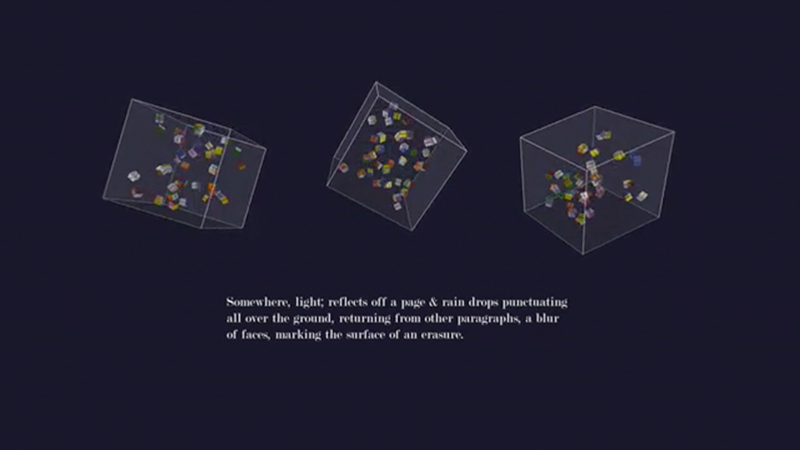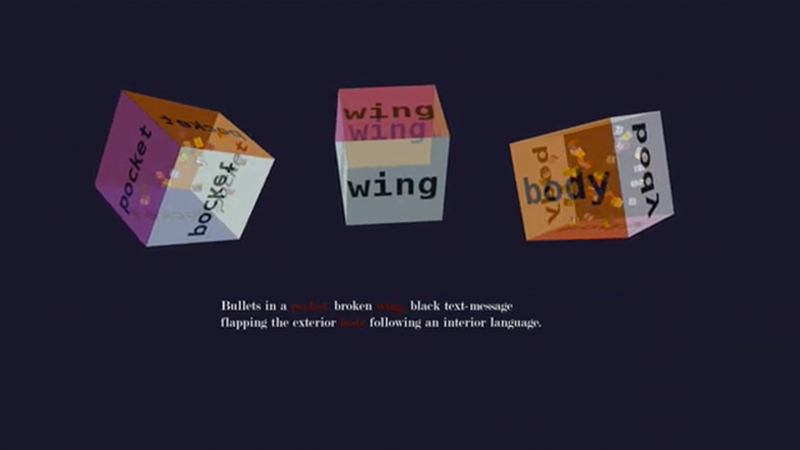"The cube is a significant figure in the history of electronic literature, functioning as a 3D inscriptional surface that emphasizes the transition from the 2D surface of the printed page. (See also William Gillespie's Letter to Linus in this volume. In ELC1 see Mary Flanagan's [theHouse] and Daniel C. Howe and Aya Karpinska's open.ended.) Roulette is structurally comprised of three translucent rotating cubes that themselves contain a set of smaller rotating cubes, or dice, with one word on all six surfaces. The selection of a cube then alters the primary text, which is both narratological and poetic. Reading and play are not predictive per se, as befits the work's title, but there is a sense in which one can calculate probability and develop a reading strategy based on algorithmic and syntactical rules." -- from Electronic Literature Collection, Volume 2
"Daniel Howe’s Roulette, a collaboration with Bebe Molina, is the most technically audacious of the pieces in this issue, and one which offers the reader a tantazling [sic] way of interacting with text. The reader is allowed control over interrelated text in a way totally unlike a paper-and-ink based reading experience. The narrative at the center of Howe and Molina’s piece is fractured and fracturable, is a collection of stories that will shift and mean different things to different readers." -- from The New River Journal, Spring 2008
2 COPIES IN THE NEXT
The Electronic Literature Collection Volume 2
Published in 2011 by Electronic Literature Organization.
The ELO gave this copy of the work to the Electronic Literature Lab in 2018.
PUBLICATION TYPE
Anthology
COPY MEDIA FORMAT
Web
ORIGINAL URL
https://collection.eliterature.org/2/works/howe_roulette.htmlAn unpublished copy.
Amanda Hodes transferred the files for this copy to Dene Grigar in June 2022.
COPY MEDIA FORMAT
Web

